UX-strategy in practice. Part 1 - Framework
Ideally, the design should be dealt with systematically from the launch of the first products of the company. But this is not always the case for various reasons - it is important to start as early as possible, there was no money at the start, the fastest growth was required, the concept was constantly changing in the search for a working business model, etc. Remember the first Windows, Android to version 4.0 and a lot of other products. Why it happens?
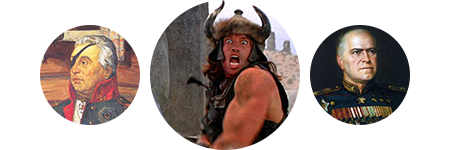
')
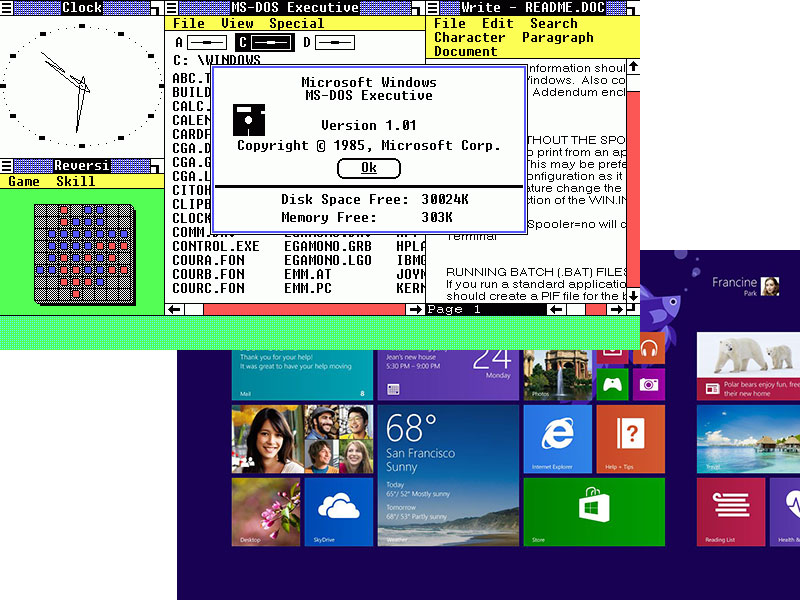
1985: about 500 thousand copies. 2013: more than 90% of the market.

2009: about 2% of the market. 2013: more than 80% of the market. The evolution of the interface .
The growth rate of the audience of the product and its penetration into the market in the early period of the company's life are more important than the perfection of technical solutions and design quality. And this is especially true for lean startups and the MVP (minimum viable product) concept — you first need to confirm that you are solving the right problem for the right audience in the right market. And only then you can engage in polishing the product.
At some point, an understanding of the importance of design for the success of products still comes. The reasons may be different - competitors are increasing, there is a bad feedback from users, there is negative public opinion, there is an outflow of the audience, it is just fashionable, etc. The company moves from aggressive accumulation of user base to its retention.
Many years ago, our company Mail.Ru Group faced similar tasks. We have about 40 products, and many of them also have a pack of mobile and tablet versions - a total of a couple of hundreds of projects come out. A significant part of them are leaders in their niches. The total audience - more than hundreds of millions of users. This scale imposes its own characteristics on the process of rethinking the current design.
In this series of articles, I will talk about what levels of development the UX change is undergoing in a company with a large product portfolio. Based on our experience, observation of other large organizations and studying existing models of UX maturity, I identified three levels of its development:
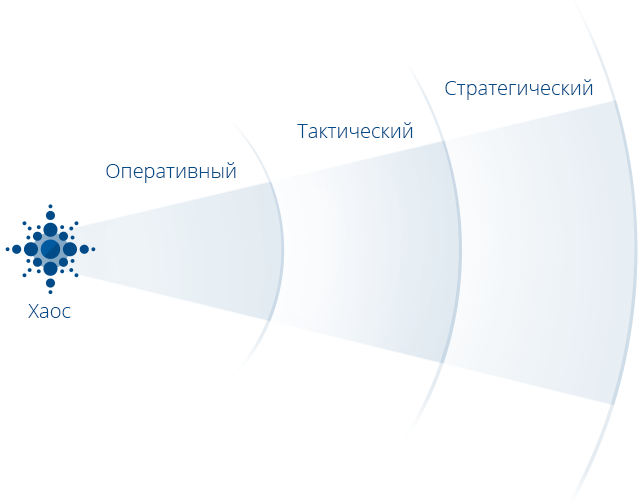
These levels of development correspond to the levels of penetration into product and business management. Each of them has basic components that are required to achieve it. And also those that ensure sustainable development. Sustainable development is critical so that design in a company develops systematically and with predictable quality. Together, this is called design strategy. I will tell about it in my series of articles - voluminous and, I hope, useful for you.
In addition to the maturity of the UX, the company itself must be mature. They are at different levels of development in terms of business success and internal organization. This causes mobility in the selection of goals, the stability of the business model and current market position, the availability of funds for investing in products and processes, the qualifications and foresight of employees and management, general priorities, etc. This is the environment in which the UX will develop and its features are crucial for the success of the implementation of the UX strategy. In order to implement it, you need to deeply understand the company's business.
For our tasks, it is important to understand the state of the three key elements of the company - resources, processes, priorities.
These are the basic requirements that ensure the ability to execute the UX-strategy and in general any attention to design. In the simplest sense, resources are:
It is important to assess their current status and compare with what is needed for the successful implementation of your strategy. If there are enough of them - great, at the start! If there are no resources, is it possible to get them in the near future and with whom you need to agree on this? What if we break the implementation of the strategy into several stages, with a gradual allocation of new ones? What if the necessary resources are already available, just no one has asked them yet?
Systematic work on the UX is primarily the alignment of the process of creating and improving the design, as well as its integration into the overall production. A good design process should take into account the entire production chain. And remember its real state and try to bring in perfect:
Designer's involvement is critical in the design and quality assurance phases. It is important at the initiation stage if the design team wants to be more than just a performer. And within the framework of designing services, the optimization of support and marketing processes can become an independent task of the designer. In an ideal situation, the UX is an important component of each of the stages.
It is equally important to understand the basic principles of a particular company:
At the start of the company, a small group of founders and first employees can solve all product problems. These are generalists who cover all duties themselves. But over time, there is a need for specialization. There is a separation of roles, hiring new people and the overall growth of the company. This means that the organizational structure and workflow changes from initiation to product launch. And if the company is ambitious - it will happen regularly.
In addition, in any organization there is a policy. Not always in a bad sense - intrigue and podsizhivaniya, which is told in the movies and news. The first is the consideration of the interests of other participants in the workflow. This will help get their support and generally act more effectively as a team, avoiding internal conflicts and contradictions.
Current processes in the company are not always effective. Somewhere this is due to the youth of the organization, somewhere - a heavy legacy or the current crisis, and perhaps the inertia of the leadership. And first you have to integrate into this structure on the terms of the company. But if you want to seriously change something - you will need to deal with the restructuring of processes in addition to design. And to be honest, a successful company always changes, so the efficiency of processes usually does not keep up with growth. This means that you need to be alert and after building an optimal design process.
The company and its products always have a lot of development paths. Priorities talk about which ones and why it chooses. This choice is influenced by the general state of the market and its niches that we would like to occupy or strengthen; competitors' positions and behavior; general technology trends; current state of the company's products and business, etc. A UX strategist should not only know where the company is heading, but also understand why exactly - what problems are facing the business right now and will be important in the medium and long term. After all, these problems will need to be solved with the help of design.
The priorities themselves are different:
A company can have several priorities at once. Moreover, different products of a company may have different sets of priorities. And UX-specialists need to understand what exactly they can help. At first, it is important to learn how to efficiently serve the current design requests, and they are often quite simple and require just good execution technique. But then you can think about the impact on the formulation of problems and the choice of priorities. Here the method of provoking business problems with the artifacts and activities that the design team does is useful.
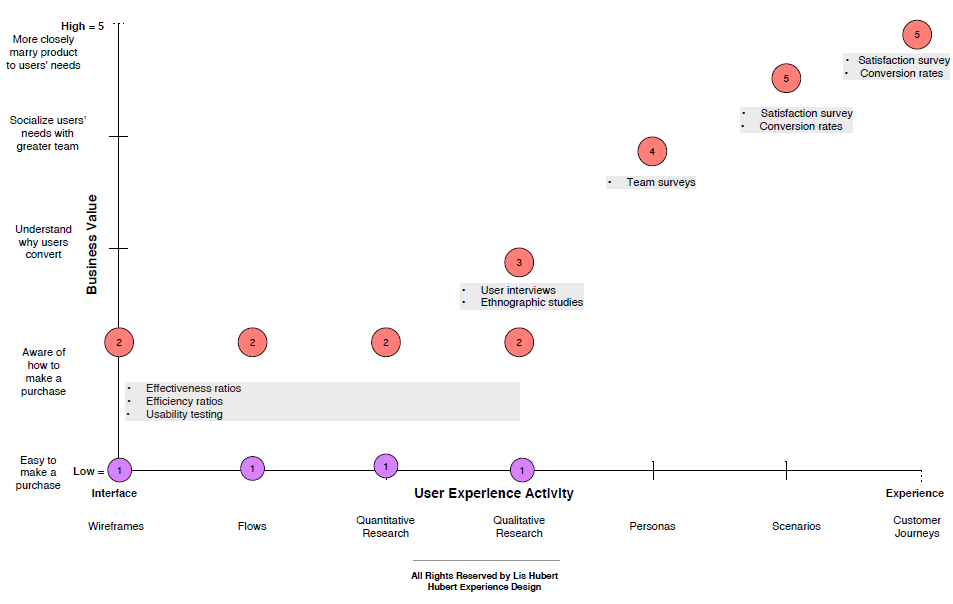

At the Design Strategy training within UX Intensive, Adaptive Path talk about the five stages of the evolution of the design team:
It is also important that the value of a good design is understood by the top management of the company. Then you will be insured against an abrupt change of mood and course, which will ruin all your achievements in building the process and updating products. This, unfortunately, happens regularly and with dire consequences for UX. Identity design classic Paul Rand was always keen to work with the top management of the company directly - so he could be sure that his work would not lie on the table and would not be distorted.
These parameters of resources, processes and priorities can be used as a check-list when studying a company for which you will think over a UX-strategy. They make up her "portrait". And most organizations have their own characteristics, so although the goals of UX implementation are similar or identical for most, the implementation of the strategy is almost always unique in details.
Someone is lucky and the company is initially built around the idea that design is an important competitive advantage and a way of differentiation, it is a real business driver. Somewhere the founders or some of the first employees are designers, so the interface is initially made correct. But most organizations think about the systemic approach to UX after they have been formed as a business, therefore, to study its current state is one of the main tasks of the UX strategist. In addition to the checklist, the maturity models of companies and products can help in this analysis.
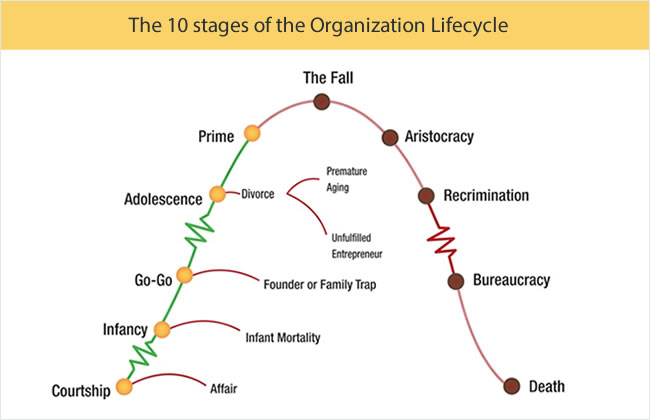

And to complicate the task - remember that companies and the competitive environment are constantly changing. So your strategy should adapt to these changes, allowing you to get the maximum benefit from design as a way to solve current problems and problems.
As I said at the beginning of the article, based on our experience, observation of other large organizations and studying the existing models of UX maturity, I identified three levels of its development - operational, tactical and strategic. To move up on them, you need to understand well how your company and its business work - whether there are all necessary conditions, current restrictions and problems. In this introductory article I will briefly describe these levels, and in the subsequent parts I will reveal in detail.
The UX team acts as an ultimate performer - it ensures the execution of design artifacts tasks.
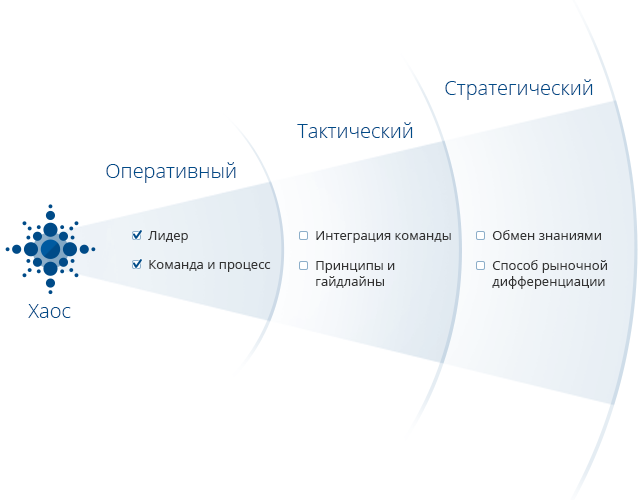
Quality design - how lucky.
The first step to the system work on the design; first successes and restarts of products.
Adjusted workflow; have short and medium term planning; There are clear criteria for setting and accepting tasks.
Designers become part of the product team - they closely integrate design work with other product tasks.

Effective work in conjunction with the entire product team; designers understand developers and managers, and they - designers.
Maintaining current and launching new services becomes easier; the product portfolio has its own face.
The team becomes a visionary and somewhere even a product manager - influences strategic decision making on product development.

All the knowledge gained about users and their work with the interface helps to improve the entire product portfolio; the company does not repeat mistakes.
The company has its own visual language and language of interaction, which affects the industry as a whole.
There are several models describing the development of UX in the company. It will be useful to study them in order to have a broader understanding of possible approaches.
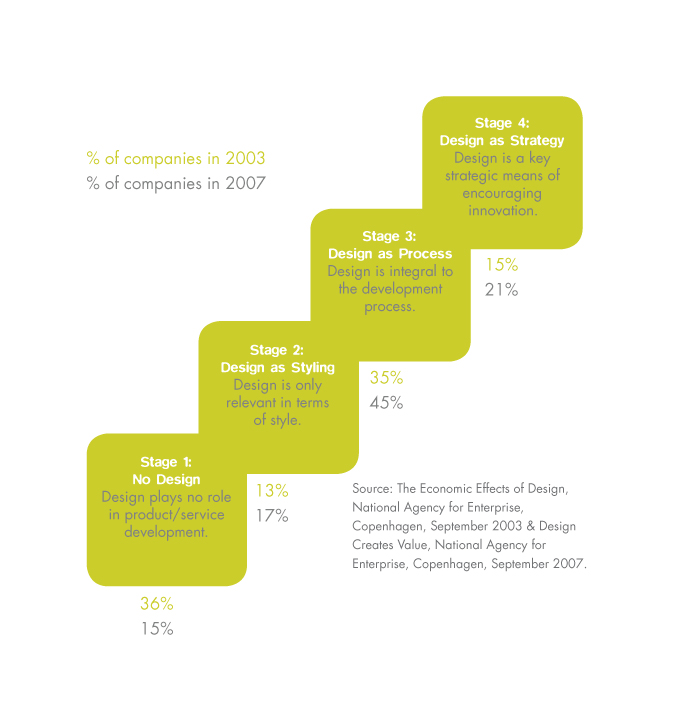
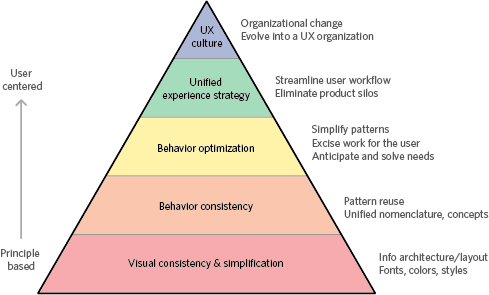

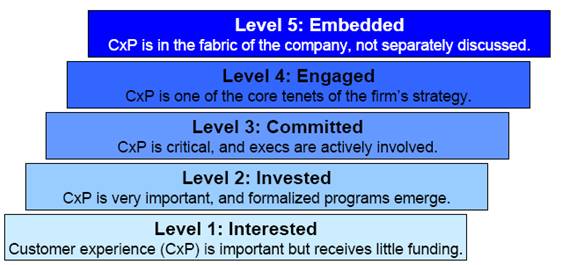
She has a lot of alternative options - for example, from Normal Modes and Renato Feijo .
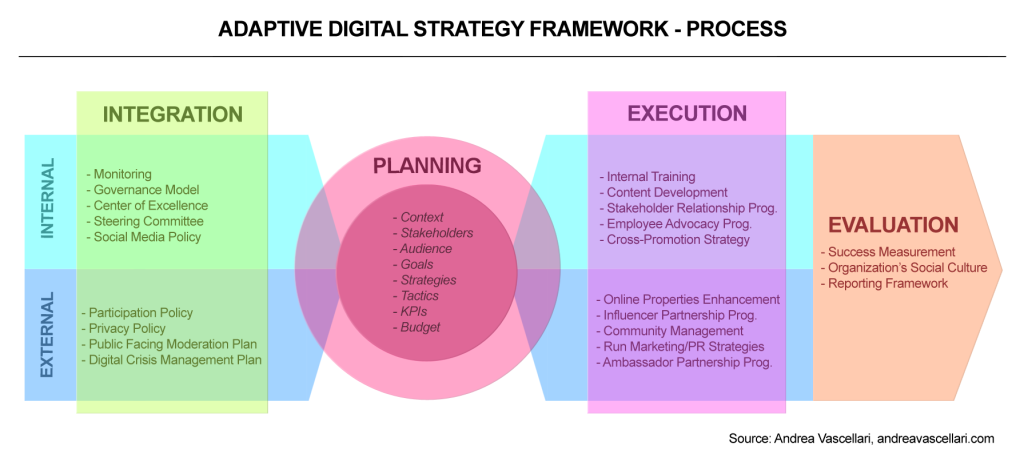
Surely you will disagree with each of them in some ways, but this is normal - there will not be a “universal theory of everything”. But they will be a good starting point to describe the UX strategy for your company.
The higher you progress in the maturity levels of the UX, the better the product the company will receive at the output. And the easier it will be to maintain this level of quality. You can jump over levels, but this is a short-term success and it will be harder to maintain. You do not want everything to fall apart when you leave or leave the company? Try to focus on long-term goals. In the following parts of the article I will explain how to do this at each level.

')

1985: about 500 thousand copies. 2013: more than 90% of the market.

2009: about 2% of the market. 2013: more than 80% of the market. The evolution of the interface .
The growth rate of the audience of the product and its penetration into the market in the early period of the company's life are more important than the perfection of technical solutions and design quality. And this is especially true for lean startups and the MVP (minimum viable product) concept — you first need to confirm that you are solving the right problem for the right audience in the right market. And only then you can engage in polishing the product.
At some point, an understanding of the importance of design for the success of products still comes. The reasons may be different - competitors are increasing, there is a bad feedback from users, there is negative public opinion, there is an outflow of the audience, it is just fashionable, etc. The company moves from aggressive accumulation of user base to its retention.
Many years ago, our company Mail.Ru Group faced similar tasks. We have about 40 products, and many of them also have a pack of mobile and tablet versions - a total of a couple of hundreds of projects come out. A significant part of them are leaders in their niches. The total audience - more than hundreds of millions of users. This scale imposes its own characteristics on the process of rethinking the current design.
In this series of articles, I will talk about what levels of development the UX change is undergoing in a company with a large product portfolio. Based on our experience, observation of other large organizations and studying existing models of UX maturity, I identified three levels of its development:
- Operational - designer as the ultimate performer. Provides tasks for creating design artifacts.
- Tactical - designer as part of the product team. Closely integrates design work with other product tasks.
- Strategic - designer as a visionary and product manager. Influences strategic product development decisions.

These levels of development correspond to the levels of penetration into product and business management. Each of them has basic components that are required to achieve it. And also those that ensure sustainable development. Sustainable development is critical so that design in a company develops systematically and with predictable quality. Together, this is called design strategy. I will tell about it in my series of articles - voluminous and, I hope, useful for you.
Company maturity
In addition to the maturity of the UX, the company itself must be mature. They are at different levels of development in terms of business success and internal organization. This causes mobility in the selection of goals, the stability of the business model and current market position, the availability of funds for investing in products and processes, the qualifications and foresight of employees and management, general priorities, etc. This is the environment in which the UX will develop and its features are crucial for the success of the implementation of the UX strategy. In order to implement it, you need to deeply understand the company's business.
For our tasks, it is important to understand the state of the three key elements of the company - resources, processes, priorities.
Resources
These are the basic requirements that ensure the ability to execute the UX-strategy and in general any attention to design. In the simplest sense, resources are:
- Money that can be invested in something other than the most basic needs - ensuring the performance of the current product and attracting new users. It is useful to understand whether the company has money in general and a specific product or division in particular.
- People capable of performing design and UX tasks. Especially important are their qualifications and workload.
- The time that the development team has before launching the product or one of its components.
- Credit of trust , giving the opportunity to make bold decisions without manual control and direct instructions on every little thing on the part of management.
It is important to assess their current status and compare with what is needed for the successful implementation of your strategy. If there are enough of them - great, at the start! If there are no resources, is it possible to get them in the near future and with whom you need to agree on this? What if we break the implementation of the strategy into several stages, with a gradual allocation of new ones? What if the necessary resources are already available, just no one has asked them yet?
Processes
Systematic work on the UX is primarily the alignment of the process of creating and improving the design, as well as its integration into the overall production. A good design process should take into account the entire production chain. And remember its real state and try to bring in perfect:
- Initiation of products and their new features . Who in the company decides on the launch and redesign of services, as well as specific functions? How to conduct market research, competitors, target audience? In what form are these solutions transformed into tasks when they get to the designers?
- Development . What development model is adopted in the company - cascade, iterative, lean? What artifacts are designers transmitting to developers and how is implementation support going?
- Quality assurance . What does the company mean by high-quality product sales - basic “does not fall”, compliance with functional and business requirements, good usability, following design guidelines and original layouts? Does the design team have the opportunity to delay the release of the product in case of problems in consumer qualities?
- Marketing How and to what audience is the product moving? Do advertising promises correspond to what he can really do? Is the quality of the visual design of the product itself comparable with the design of marketing materials?
- Support At what stages and in what form does the company help users in solving their problems in using the product? What is user satisfaction with contacting support?
Designer's involvement is critical in the design and quality assurance phases. It is important at the initiation stage if the design team wants to be more than just a performer. And within the framework of designing services, the optimization of support and marketing processes can become an independent task of the designer. In an ideal situation, the UX is an important component of each of the stages.
It is equally important to understand the basic principles of a particular company:
- Powers and responsibilities of each member of the product team.
- The order of coordination - from requirements and final artifacts to large stages of work and product solutions.
- Evaluation and monitoring of performance - employees, departments, products and product solutions.
- Organizational structure - matrix, functional, divisional or combined. Division into divisions, products, divisions and roles.
At the start of the company, a small group of founders and first employees can solve all product problems. These are generalists who cover all duties themselves. But over time, there is a need for specialization. There is a separation of roles, hiring new people and the overall growth of the company. This means that the organizational structure and workflow changes from initiation to product launch. And if the company is ambitious - it will happen regularly.
In addition, in any organization there is a policy. Not always in a bad sense - intrigue and podsizhivaniya, which is told in the movies and news. The first is the consideration of the interests of other participants in the workflow. This will help get their support and generally act more effectively as a team, avoiding internal conflicts and contradictions.
Current processes in the company are not always effective. Somewhere this is due to the youth of the organization, somewhere - a heavy legacy or the current crisis, and perhaps the inertia of the leadership. And first you have to integrate into this structure on the terms of the company. But if you want to seriously change something - you will need to deal with the restructuring of processes in addition to design. And to be honest, a successful company always changes, so the efficiency of processes usually does not keep up with growth. This means that you need to be alert and after building an optimal design process.
Priorities
The company and its products always have a lot of development paths. Priorities talk about which ones and why it chooses. This choice is influenced by the general state of the market and its niches that we would like to occupy or strengthen; competitors' positions and behavior; general technology trends; current state of the company's products and business, etc. A UX strategist should not only know where the company is heading, but also understand why exactly - what problems are facing the business right now and will be important in the medium and long term. After all, these problems will need to be solved with the help of design.
The priorities themselves are different:
- Search for a suitable market, product solution and business model for its monetization . The product is simply obliged to change often and maybe even drastically for the company to survive. The role of the designer is participation in research, formulation and testing of product hypotheses, operational design polishing.
- User base growth and / or profits . The product acquires new features, gets new ways of distribution. The role of the designer is research, detailed design, interface design and testing.
- User retention . There is a need to detuning from a competitor - by increasing consumer qualities, expanding product capabilities, optimizing key usage scenarios, enhancing brand importance, and market differentiation. The role of the designer is research and interface optimization.
- The effectiveness of the product portfolio . It becomes important to accelerate and simplify the process of creating and developing services, including their design. The role of the designer is to create guidelines and standards.
- Product withdrawal from crisis , when the user base falls, profits or market share - all at once or some of them. Two scenarios are possible - gradual evolution or radical changes. The role of the designer is research, detailed design, interface design and testing.
A company can have several priorities at once. Moreover, different products of a company may have different sets of priorities. And UX-specialists need to understand what exactly they can help. At first, it is important to learn how to efficiently serve the current design requests, and they are often quite simple and require just good execution technique. But then you can think about the impact on the formulation of problems and the choice of priorities. Here the method of provoking business problems with the artifacts and activities that the design team does is useful.
Linking business tasks with artifacts and activities from Lis Hubert

Human Factors International Framework

At the Design Strategy training within UX Intensive, Adaptive Path talk about the five stages of the evolution of the design team:
- Solving design problems.
- Solution of development tasks.
- Solving user problems.
- Solving business problems.
- The ability to call into question the need for setting specific tasks.
It is also important that the value of a good design is understood by the top management of the company. Then you will be insured against an abrupt change of mood and course, which will ruin all your achievements in building the process and updating products. This, unfortunately, happens regularly and with dire consequences for UX. Identity design classic Paul Rand was always keen to work with the top management of the company directly - so he could be sure that his work would not lie on the table and would not be distorted.
What about your company?
These parameters of resources, processes and priorities can be used as a check-list when studying a company for which you will think over a UX-strategy. They make up her "portrait". And most organizations have their own characteristics, so although the goals of UX implementation are similar or identical for most, the implementation of the strategy is almost always unique in details.
Someone is lucky and the company is initially built around the idea that design is an important competitive advantage and a way of differentiation, it is a real business driver. Somewhere the founders or some of the first employees are designers, so the interface is initially made correct. But most organizations think about the systemic approach to UX after they have been formed as a business, therefore, to study its current state is one of the main tasks of the UX strategist. In addition to the checklist, the maturity models of companies and products can help in this analysis.
The life cycles of Yitzhak Adizes

Geoffrey Moore product penetration model

Jared Spool technology markets maturity model
| Stage | Users Want | Usability means | Developers Focus On |
|---|---|---|---|
| Raw iron | The basic capability | The product works | Technical issues and delivery |
| Checklist battles | The best set of features | Having the right functions | Adding features and fixing bugs |
| Productivity Wars | To get their work done better and faster | Easy to learn, fast, powerful | Performance support, reducing technical support costs |
| Transparency | Lowest cost | The product is invisible | Reducing costs or seeking new markets |
And to complicate the task - remember that companies and the competitive environment are constantly changing. So your strategy should adapt to these changes, allowing you to get the maximum benefit from design as a way to solve current problems and problems.
UX Maturity
As I said at the beginning of the article, based on our experience, observation of other large organizations and studying the existing models of UX maturity, I identified three levels of its development - operational, tactical and strategic. To move up on them, you need to understand well how your company and its business work - whether there are all necessary conditions, current restrictions and problems. In this introductory article I will briefly describe these levels, and in the subsequent parts I will reveal in detail.
Executive team
The UX team acts as an ultimate performer - it ensures the execution of design artifacts tasks.

Unsystematic design
Quality design - how lucky.
- The developers do it themselves. It is necessary to arrange the interface elements on the screens in any case, as well as to give it some kind of visual style.
- First designers are hired, or someone from an existing team with the beginnings of abilities becomes a designer. Perhaps one of the founders of the company has design experience.
- Outsourcers are connected. Before hiring people in the team or after. But few people know how to work with designers correctly, so the final result is also chaotic.
- Design tasks are formally solved. Quality design - how lucky.
Leadership's desire to change and leader
The first step to the system work on the design; first successes and restarts of products.
- The management is aware of the problems in consumer qualities. On negative feedback, outflow of users, criticism of the industry.
- Finding a leader or a leader finds a company, or a person grows up inside.
- The leader shows exactly what the problems are and how they can be solved.
- Conducted user research and analytics.
- The first success, the first changes in the products and restarts.
Team and workflow
Adjusted workflow; have short and medium term planning; There are clear criteria for setting and accepting tasks.
- The team is going or bought ready. Always take as strong people as possible or promising. In the early period, you can take medium to close the holes - later they grow with the team or go.
- The procedure for setting and accepting specific tasks is determined. The principle of short-term and medium-term design planning is being built.
- It identifies key stages of work on typical tasks - from creating the concept of a new product to supporting existing ones.
- Optimal tools are selected and debugged for designing and designing, storing and sharing knowledge and design artifacts, planning and tracking performance.
- Outsourcers are connected to solve non-food, technical problems or if there are not enough hands. Long-term relationships are being established.
- The processes of training and professional development of specialists in a team are launched.
- There is a regular update of products.
Team tactics
Designers become part of the product team - they closely integrate design work with other product tasks.

Team integration
Effective work in conjunction with the entire product team; designers understand developers and managers, and they - designers.
- The importance of good UX comes to specific product managers. They begin to understand and support the UX team; come with problems, not ready-made solutions. Designers are responsible for design and UX, but they work in conjunction with the manager to solve product problems. When new managers arrive, they also need to be trained.
- The team gets credibility and credibility. She is trusted more, constantly listened to, all design solutions pass through it in advance.
- Designers are trusted by end experts - developers, layout designers, testers. They often directly apply for solutions to current work problems, bypassing managers.
- The principle of medium-term and long-term planning of works on design is being built.
- There is a standardized quality control mechanism for the products produced. The quality of the implementation of the design and design review, usability, analytics for compliance with the set business objectives.
- There is a set of products, united by a common style and principles of work.
Design principles and standards
Maintaining current and launching new services becomes easier; the product portfolio has its own face.
- The first “model” products appeared, which are taken as a basis for future unification. Their style, logic of work, consumer qualities are quite good. The concept allows you to scale it. It is difficult to make guidelines in a vacuum and to impose them on everyone, they definitely need to break in on a pair of products before mass use.
- New products and updates are made in the image of the model.
- Created guidelines describing the logic of work and style of model products. Guidelines become a reference point for designers, managers and developers. Guidelines exist in the form of specifications and layouts.
- Technologization guidelines. On the basis of guidelines, frameworks, common code bases, etc. are made. The design is sewn into building tools that developers use.
- We reduce a hundred products to several guidelines - they are easier to control and develop. Instead of controlling hundreds of products, we control several guidelines. We make changes immediately to the product group, and do not go for each individual.
- Design principles that guide the company in the creation and development of products. High-level "commandments" that imply criteria for the selection of design solutions.
- Updated design of all products. The UX in the product portfolio is consistent.
Team visionary
The team becomes a visionary and somewhere even a product manager - influences strategic decision making on product development.

Knowledge accumulation and exchange
All the knowledge gained about users and their work with the interface helps to improve the entire product portfolio; the company does not repeat mistakes.
- There is a single knowledge base on how users work with products, competitors, trends, etc. Analytics, user research, market and competitive research, feedback, data from CRM systems.
- Metrics that evaluate product design development are defined and tracked. They are tied to business metrics and goals.
- Product development ideas go upwards, from designers to product managers.
Design as a tool for market differentiation
The company has its own visual language and language of interaction, which affects the industry as a whole.
- Design becomes a means of market differentiation.
- All members of the product team have at least basic design abilities - developers, layout designers, testers, and managers.
- The company is able to define its own visual language; The style catches trends at the very start or determines them.
- Product design affects the industry as a whole; interface solutions copy competitors.
Other models of maturity UX
There are several models describing the development of UX in the company. It will be useful to study them in order to have a broader understanding of possible approaches.
Danish Design Office

Jakob nielsen
- Hostility Toward Usability
- Developer-Centered Usability
- Skunkworks usability
- Dedicated usability budget
- Managed usability
- Systematic Usability Process
- Integrated User-Centered Design
- User-Driven Corporation
Stefan klocek

Thomer Sharon

Macadamian Technologies
| Characteristic | 1: Unenlightened | 2: Awakening | 3: Enlightened | 4: Super Human | 5: Celestial |
|---|---|---|---|---|---|
| Timing of Initial UX Activities | End of development (if at all) | After most of the coding is done | Mixed. Sometimes prior to coding, sometimes in parallel, sometimes before | Prior to code being written | As part of business and market requirements |
| Availability of Skilled / Knowledgeable Resources | - | Visual design | Visual, Interaction, Research, Lower Level Management | Visual, Interaction, Research, Lower and Upper Management | Visual, Interaction, Research, Management, Executive |
| Sophistication of Techniques Used to Incorporate User Input | Non-existent | - | Often usability testing, but not user needs | User needs and usability, sometimes integrated with marketing | Integrated Marketing |
| Leadership | - | - | No clear owner, shared amongst functions | Clear owner in upper management | Clear owner and well understood |
| Adoption and Integration of Processes | Unaware | Alertness | Organization learning, adopting, integrating | Well Integrated in product creation | Well integrated into all aspects of company culture |
| Perspective on Business Impact | - | Minimal | Mixed. Significant on some products | Significant on products or across products | Significant across the entire customer experience |
Bruce Temkin for Forrester Research

She has a lot of alternative options - for example, from Normal Modes and Renato Feijo .
Andrea Vascellari

Surely you will disagree with each of them in some ways, but this is normal - there will not be a “universal theory of everything”. But they will be a good starting point to describe the UX strategy for your company.
Eventually
The higher you progress in the maturity levels of the UX, the better the product the company will receive at the output. And the easier it will be to maintain this level of quality. You can jump over levels, but this is a short-term success and it will be harder to maintain. You do not want everything to fall apart when you leave or leave the company? Try to focus on long-term goals. In the following parts of the article I will explain how to do this at each level.
Source: https://habr.com/ru/post/210576/
All Articles